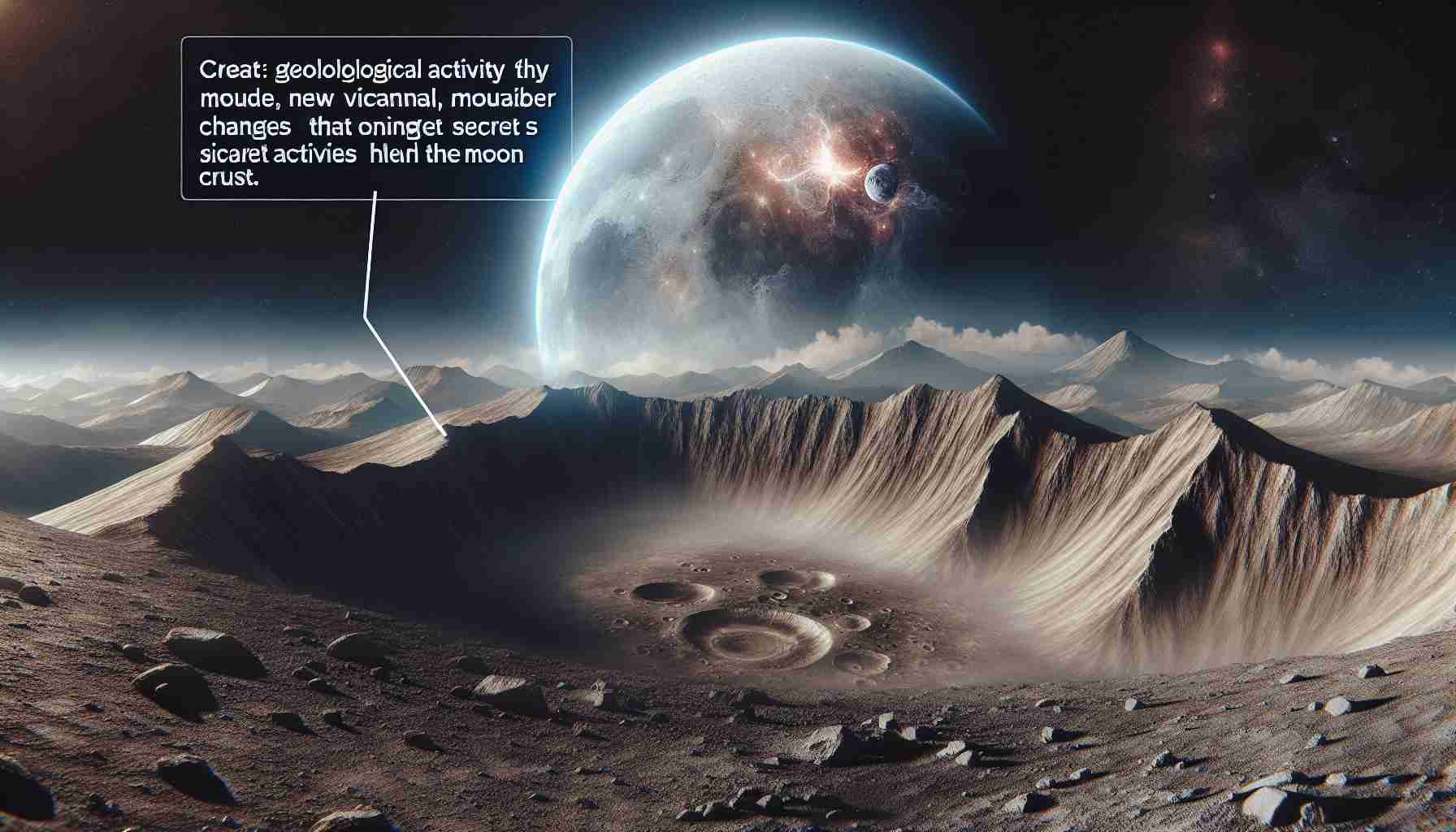- New research indicates that the Moon is not as dormant as previously thought, showcasing evidence of active geological processes.
- Researchers have identified 266 new ridges on the far side of the Moon, suggesting recent tectonic activity.
- These geological formations are believed to have occurred within the last 200 million years, challenging traditional views of lunar history.
- Some ridges were created by geological forces as recently as 160 million years ago, evidenced by their intersection with older craters.
- This discovery may impact future lunar exploration missions, as it underscores the importance of understanding the Moon’s geological activity when planning landings and bases.
- Ground-penetrating radar could be crucial in future missions to explore the hidden layers of the Moon’s surface.
Scientists have made a groundbreaking discovery that might just change our understanding of the Moon forever. For years, it was believed that the Moon was a cold, dormant rock, its surface frozen in time for billions of years. However, new research unveils evidence of active geological processes still occurring on the Moon’s far side, suggesting it’s much more dynamic than previously imagined.
Utilizing advanced mapping techniques, researchers from the Smithsonian Institution and the University of Maryland have identified 266 previously unknown ridges on the Moon’s far side, indicating recent tectonic activity. These young ridges, nestled in ancient volcanic regions, suggest the Moon’s interior may still be shifting, contradicting the long-held belief that its geological movements occurred billions of years ago.
The implications are staggering. These recent formations seem to have originated within the last 200 million years, shockingly recent in lunar history. By examining the number of craters surrounding these ridges, scientists discovered that some ridges actually cut through older craters, implying they were formed by active geological forces in the last 160 million years.
This revelation beckons a reconsideration of future lunar missions. Understanding that the Moon is still geologically active could guide crucial decisions about where astronauts might land and establish bases. To fully grasp this celestial body, the use of ground-penetrating radar in upcoming missions may be essential to uncover the layers hidden beneath its surface.
In short, the Moon is not just a silent witness in the cosmos; it’s alive with secrets waiting to be explored!
Moon’s Geological Secrets Revealed: Is Our Understanding of Lunar Activity About to Change?
Understanding the New Discoveries About the Moon
Recent scientific advancements have challenged the traditional view of the Moon as a lifeless, dormant rock. Current research indicates that the Moon may still be experiencing active geological processes, particularly on its far side.
# Key Findings
– Active Geological Processes: Evidence has been found of ongoing geological activity on the Moon, a stark contrast to its previously considered frozen state.
– 266 New Ridges: Researchers identified 266 previously unknown ridges on the Moon’s far side, indicative of tectonic movements that suggest internal activity.
– Recent Origins of Ridges: These geological formations might have formed in the last 200 million years, with some dating back only 160 million years, as determined by the analysis of impact craters.
# Implications of the Findings
This groundbreaking research alters the future of lunar exploration. These discoveries could significantly shape upcoming missions:
– Mission Planning: Understanding the Moon’s geological dynamism can influence astronaut landing sites and the establishment of future lunar bases.
– Advanced Mapping Techniques: Technologies like ground-penetrating radar may play a pivotal role in future explorations, helping scientists uncover the unseen layers beneath the lunar surface.
Frequently Asked Questions
1. What does the discovery of active geological processes on the Moon mean for future lunar missions?
The discovery indicates that future lunar missions should take into account the potential for geological activity when selecting landing sites and planning operations. Areas of recent tectonic movements may present both opportunities and risks for exploration.
2. How do scientists know these ridges are recently formed?
Scientists determined the age of the ridges by analyzing the craters surrounding them. Ridges that cut through older craters suggest they were formed after those impacts, enabling researchers to estimate their age within the last 160 million years.
3. What technologies will assist in studying the Moon’s geological activity?
Technologies such as ground-penetrating radar will be essential in future explorations to analyze the Moon’s subsurface layers, providing insights into its geological history and current activity.
Additional Insights on Lunar Research
With these revelations, researchers are urging for a reevaluation of the Moon’s classification in terms of geological activity. The findings may suggest that the Moon is a far more complex environment, opening up new avenues for scientific study.
For further insights on the Moon and space exploration, you can visit NASA.













